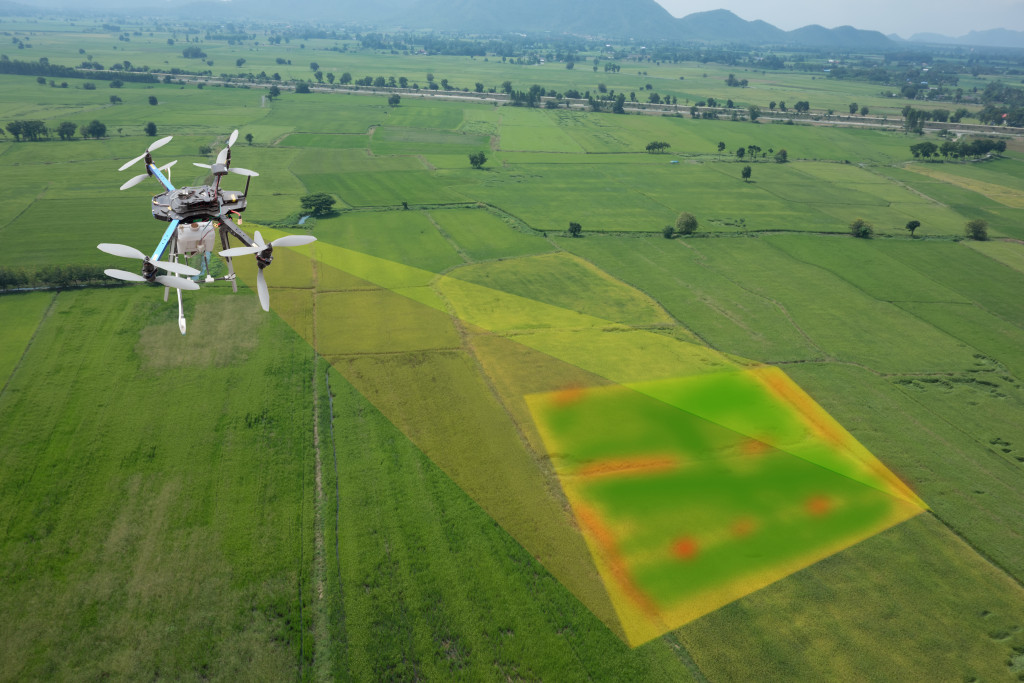Today, it’s normal to see technology integrate or work in the realm of nature. For example, we see drones being utilized in the agricultural sector. With accuracy and efficiency, drones can aid in production, specifically in spraying, seeding, and monitoring growth. These activities take time to do manually. But with the help of drones, the process is not just made convenient, it’s elevated as well. Weather conditions, crop quality, and pesticide levels are easily monitored, thus quickly addressed. This ultimately contributes to both the quality and the volume of output.
But being in different times and under different conditions, how does this affect the agricultural sector? How is it doing during the pandemic?
The Agricultural Sector During the Pandemic
One of the uncertainties that the world had to deal with at the onset of the COVID-19 outbreak was food security. A significant increase in demand was observed, especially at the onset of the outbreak. In addition, the pandemic’s significant downturn in the economy has translated into a challenge with food access, limiting people’s ability to get enough or nutritious food, particularly in countries that had already been hit by hunger and other crises before COVID-19. The unique scenario we face today is that loss of livelihood due to the pandemic dramatically contributes to this issue.
Both meat production and seafood markets were predicted to face a decline and months of decline. But the agricultural sector was expected to be more resilient than other sectors. This holds true today.
Agriculture Today
Despite the anxiety towards significant changes towards food security, there’s still enough food for everybody. Many countries exempted businesses from the agricultural sector from closure since these are categorized as important businesses. Even with these interventions, production is still affected by the pandemic. Labor shortages, increased food losses due to surplus, decline in income, and more are observed in the agricultural sector.
Prior to COVID-19, agriculture has already been confronted with other issues such as food scarcity in the future. With the global population increasing every day and the more land occupied, growing the amount of food that’ll suffice will be a real challenge by 2050. Fortunately, science is on humanity’s side. Modern problems require modern solutions. With advanced technologies and research, scientists formulated solutions to make farming more efficient and sustainable in the long run. Growing plants with saltwater, soil-enhancing fertilizers, and using robots for labor are among these. A recent trend that’s cut costs and labor while increasing efficiency is agricultural drones. That’s right; drone manufacturers have extended their market from hobbyists to farmers.
As more farmers and scientists integrate technology into farming, the recent trends observed for drones in agriculture are here.

Easy Monitoring and Management
New agricultural drone technologies make it possible for a farmer to monitor their crops using its camera. Once the drones have landed, users may use their software to gather and combined geo-tagged phot s together, allowing for better monitoring. Drones can provide farmers with regular updates on the state of the plants, allowing them to make decisions about what to do next. In addition, it’s easier for farmers to identify best irrigation practices, pesticide management, and more.
Its Adoption Will Be Common in Many Parts of the World
Another trend observed is its increasing adoption in the future. As of now, North America dominates the market for advanced technologies in agriculture. The U.S. Federal Aviation Administration recognizes its use and allows its operations as long as they adhere to guidelines. Moreover, the Asia Pacific agriculture drone market is expected to grow significantly. These countries are focusing much of their efforts on research and development to improve the use of drones. East and Southeast Asia are also looking into adopting agricultural drones as one of their national strategic goals.
A Growing Market Makes for a Competitive Industry
In addition to significant competitors, the market is highly fragmented, which means there are several local and regional players. With this rising utility in drones used in a resilient industry, it’s no surprise that many want to get into the game. However, startups and new entrants may be hampered by relatively high capital requirements and the necessity for ongoing research and development costs.
Conclusion
The agricultural sector is a significant one because of what it provides us: sustenance. However, the business of managing crops is far from easy. But with the help of agricultural drones, farmers can monitor and care for crops with greater ease in a short amount of time. Although more research is needed, it seems like this market isn’t dying down anytime soon with the way things are going.
